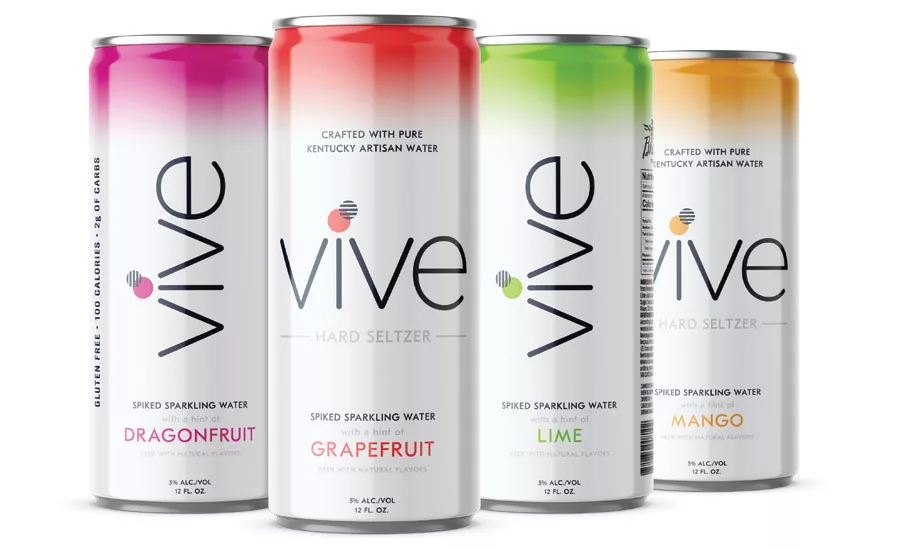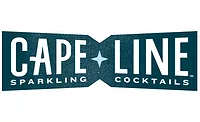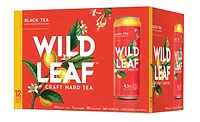2019 Beer Report: Hard seltzers fuel growth within flavored malt beverage market
Beer sub-segment now commands 2-point share of US beer sales

Calorie-counting fanatics often can be heard telling new recruits not to forget alcohol when adding up their daily calorie consumption. As beverage alcohol manufacturers seek out ways to provide a low-calorie solution, it seems as though the latest craze to hit the flavored malt beverage (FMB) segment is fulfilling that need state.
“Hard seltzers are raising the bar around perceived health and wellness and attracting much of the dollars spent in the space,” says Brian Sudano, managing partner for New York-based Beverage Marketing Corporation (BMC).
Sudano adds that the perception of lower calories and the “better-for-you” halo have been driving innovation in the segment.
Tracking FMBs as part of the ready-to-drink (RTD) mixed spirit production market, Chris Lombardo, lead industry analyst for Los Angeles-based IBISWorld, details the impact that health and wellness is having on these products.
“RTD spirits are a close substitute for beer and wine; therefore, industry demand is linked to the fluctuating popularity of other types of beverages,” he says. “Although research has been published suggesting the potential cardiac benefits of moderate wine consumption, RTD spirits do not show any potential health benefits. However, the industry has gradually increased its appeals to the health-conscious consumer by making lower-calorie drinks, cocktail blends and recipes.”
When it comes to success within the FMB segment, Patrick Livingston, director of client insights for beer, wine and spirits for Chicago-based Information Resources Inc. (IRI), highlights four main product attributes.
“We see that lightly flavored products do very well; we find that products with lower calories do very well; also lower sugar; and brands that are social or create a social opportunity,” he explains. “Generally lighter products that are more social-able tend to be doing very well in the flavored malt beverage segment. I think that we can group a lot of those products together into what we’re calling the hard seltzer sub-segment.”
(Brand family)
| DOLLAR SALES | % CHANGE VS. PRIOR YEAR | CASE SALES | % CHANGE VS. PRIOR YEAR | |
| Smirnoff | $341,279,205 | 14.8 | 9,674,574 | 16.3 |
| Twisted Tea | $323,631,885 | 21.8 | 10,087,575 | 19.8 |
| Mike's Harder | $303,274,280 | 11 | 9,040,109 | 9.7 |
| Mike's Hard | $265,205,086 | -3.1 | 7,361,188 | -4.9 |
| Bud Light Lime PAB | $252,532,954 | -15.2 | 7,726,731 | -10.6 |
| Redd's | $230,745,912 | -18.7 | 7,023,993 | -20 |
| White Claw Hard Seltzer | $194,505,683 | 241.7 | 5,846,976 | 251.5 |
| Four Loko | $145,348,604 | -5.4 | 4,149,862 | -7 |
| Truly Spiked & Sparkling | $131,439,528 | 178.8 | 4,144,246 | 199.8 |
| Steel Reserve | $70,708,453 | 18.2 | 3,090,397 | 18.9 |
| Total sales* | $2,555,899,775 | 10.7 | 76,352,763 | 12.2 |
*Includes brands not listed.
Source: Information Resources Inc. (IRI), Chicago. Total U.S. supermarkets, drug stores, gas and convenience stores, mass merchandisers, military commissaries, and select club and dollar retail chains for the 52 weeks ending Dec. 30, 2018.
Livingston explains that hard seltzers achieved a 2 point share in the U.S. beer category in 2018, based on IRI-measured channels. “That actually surpassed the cider segment, which has 1.8 share points using the same share point,” he says. “Hard seltzers also make up a third of total FMB sales, so we believe that hard seltzers are having a major impact on the FMB segment, and we also believe, as we are watching these products very closely, these products are beginning to form what appears to be a distinct segment.
“Hard seltzers are bringing flavor into the better-for-you space, which is an important cross section [that] we are finding today,” Livingston continues. “Consumers are demanding products that are better for them, fewer calories, fewer carbs, better ingredients and they’re also looking for flavor. With hard seltzers, we do believe that this segment and these brands are delivering on this cross section, which is products that are slightly better for you but also products that are bringing you flavor and taste that can be enjoyed as well.”
Within hard seltzers, three brands posted triple-digit growth for the 52 weeks ending Dec. 30, 2018, in total U.S. multi-outlets with convenience stores. Those brands are White Claw, a brand of Mark Anthony Brands Inc., with 251.5 percent volume growth; Truly Spiked & Sparkling, a brand of The Boston Beer Co., which grew nearly 200 percent in volume; and Spiked Seltzer, a brand of Anheuser-Busch InBev, which posted a case sales increase of more than 145 percent.
Hard seltzers also seem to benefit from its broad appeal since the sub-segment shows roughly a 50-50 share when it comes to male versus female consumers, Livingston says. “It may drive back to the socialization of the ability to appeal to a mixed group and more social occasions where there is a mixed group involved,” he explains. “Therefore, creating an opportunity for both male and females to enjoy the product.”
Although hard seltzers have been a growth driver for FMBs, Livingston notes that it is not the only sub-segment helping the market.
“If we remove hard seltzers from FMBs, the segment is still growing without hard seltzer, which is good to know,” he says.
For instance, the top three brand families — Smirnoff, Twisted Tea and Mike’s Harder — each posted double-digit growth in terms of dollar sales for the 52 weeks ending Dec. 30, 2018, according to IRI data.
BMC’s Sudano also highlights the numerous attributes contributing to the FMB market’s success.
“[The] amount of innovation in [the] category continues to accelerate; better product line segmentation from major players like Diageo; improved control over SKU management at retail; [and] higher alcohol alternative in FMB format as offered by Four Loko,” he says. BI
Looking for a reprint of this article?
From high-res PDFs to custom plaques, order your copy today!






